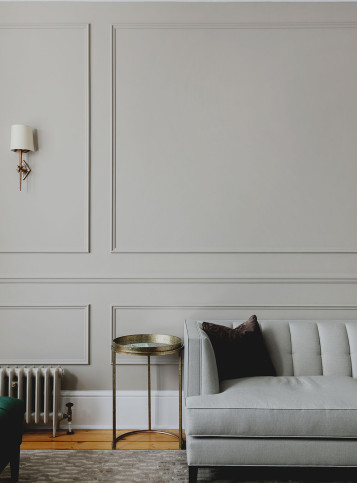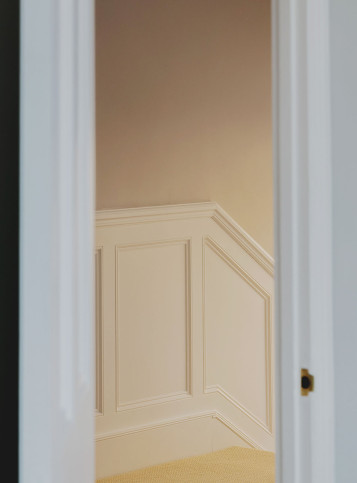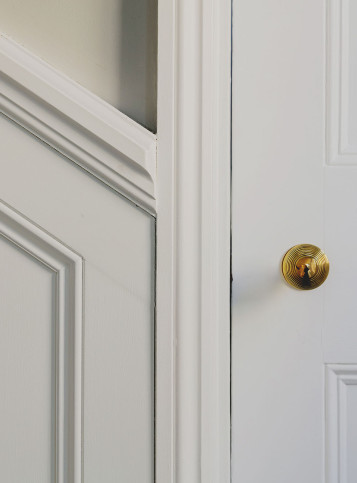What paint finish do I choose?
If you're renovating your new home or simply changing the colour of a single room, one of the questions you'll ask is 'Which paint finish should I use?'.
In this guide, we'll talk you through the most common types of paint finishes, what they look like, their benefits, where you should use them and how to use them to achieve the best results.
First, let's understand what paint finishes are and why they are important.
What are paint finishes?
Paint finishes are the different textures and sheens that a paint can have after it dries. These finishes can range from matt to high-gloss, and each has its unique benefits and drawbacks. The finish you choose will depend on the room you're painting, the type of paint you're using, and the desired look you want to achieve. Looking for expert painters in Twickenham? Our Painters & Decorators Twickenham deliver top-tier painting services tailored to your specific needs and preferences.
Why are paint finishes important?
Paint finishes not only add aesthetic value to your walls but also serve a functional purpose. Different finishes can affect how easy or difficult it is to clean the walls, how much light reflects off them, and how long they last before needing a touch-up or repaint.
Understanding the different types of paint finishes
There are three main types of paint finishes: matt, wipeable and eggshell. Each has its own unique qualities, so it's important to understand their differences before selecting a paint finish.
Matt Paint
Let’s start with matt paint. This type of finish has no shine, so it will soak up light rather than reflect it. This is great for covering any imperfections on your walls, as the light won’t bounce off them making them more visible. Matt gives a velvet (or chalky) look finish to a room, and it’s a great paint finish for the upstairs areas, creating a cosy atmosphere – ideal for bedrooms or the study. As it’s more difficult to clean, avoid using it in high-traffic areas such as the kitchen, bathroom, or children's bedroom where any fingerprints will be harder to get rid of.
Wipeable Paint
Wipeable paint has a slight sheen to it (although this is only really noticeable when it is under the direct glare of a spotlight). It will however reflect the light a little more. It’s a great paint finish for downstairs areas such as your kitchen, bathroom and hallways – any areas which get quite a bit of through traffic as it’s easy to clean. With a clean, damp, cloth you can just wipe off those scuff marks, sticky paw prints and the mucky residues from when the family hound has had a good shake after a particularly muddy walk! Our customers love Wipeable as it achieves the same look as matt but it’s practical too. It’s a durable paint so it really does offer the best of both worlds. If you’re bold enough too, a little sheen can create a glamorous feel when used on walls, or even furniture. For a small study dark blue walls with a subtle sheen will create an inviting space that doesn’t feel claustrophobic because the reflection of light will create a sense of space.
Remember, matt paint pulls you in, creating a cosy feel, while gloss gives the optical illusion of opening up a room. Wipeable sits neatly somewhere in between.
Eggshell Paint
Last but not least is eggshell, also known as a satin finish. Eggshell finishes vary quite a bit from brand to brand - from ‘dead flat’ to ‘high gloss’. Eggshell is best used on woodwork and furniture, as it’s durable, can be easily cleaned, and it’s the perfect compromise when you don’t want a flat colour, and a gloss finish is too much.
Picking the right shine level for every room is just as important as picking the right colour. How colour is perceived can change based on how matt or shiny it is, especially when interacting with natural light. For instance, grey can look much whiter than you’d expect in a light sheen – light room context, whereas darker colours contain more pigment, so they will always have more lustre.



Choosing the right paint finish
Now that you understand the different types of paint finishes available, you may be wondering how to choose the right one for your project. Here are some factors to consider when selecting a paint finish:
Room type
- Hallway: High-traffic area, usually darker than other rooms in the house – we suggest wipeable.
- Kitchen/bathroom: High-traffic areas, prone to stains, needs easy-to-clean paint – we suggest wipeable.
- Living room/bedroom: Low-traffic areas, needs smooth looking walls and a cosy feel – we suggest matt, but if you’re looking for a more vibrant look go for wipeable.
Lighting
Consider the lighting in the room you're painting. Matte and eggshell finishes absorb light, making them perfect for rooms with a lot of natural light. Satin and semi-gloss finishes reflect more light, making them ideal for rooms with limited natural light.
Wall condition
Consider the condition of your walls. If your walls have imperfections such as cracks or bumps, a matte finish may be the best choice as it will not highlight these flaws. If your walls are in good condition, a higher sheen finish such as satin or semi-gloss may be appropriate.
Cleaning and maintenance
Consider how often the room will need to be cleaned and maintained. High-traffic areas such as bathrooms and kitchens may benefit from a more durable and washable finish such as semi-gloss or high-gloss.
Style and aesthetic
Consider the style and aesthetic you're trying to achieve. If you want to create a dramatic and bold statement, a high-gloss finish may be the best choice. If you want to create a more relaxed and peaceful atmosphere, a matte or eggshell finish may be more appropriate.
Conclusion
Choosing the right paint finish can have a significant impact on the overall look and feel of a room. Matte and eggshell finishes create a relaxed and peaceful atmosphere, while satin and semi-gloss finishes provide a more durable and washable surface. High-gloss finishes create a dramatic effect and add a modern touch to a room.
Consider the type of room you're painting, the lighting, wall condition, cleaning and maintenance, and style and aesthetic when selecting a paint finish. And remember to use the appropriate tools and techniques for each finish for the best results.
With this guide to paint finishes, you're now equipped to make an informed decision and create the perfect finish for your next painting project.